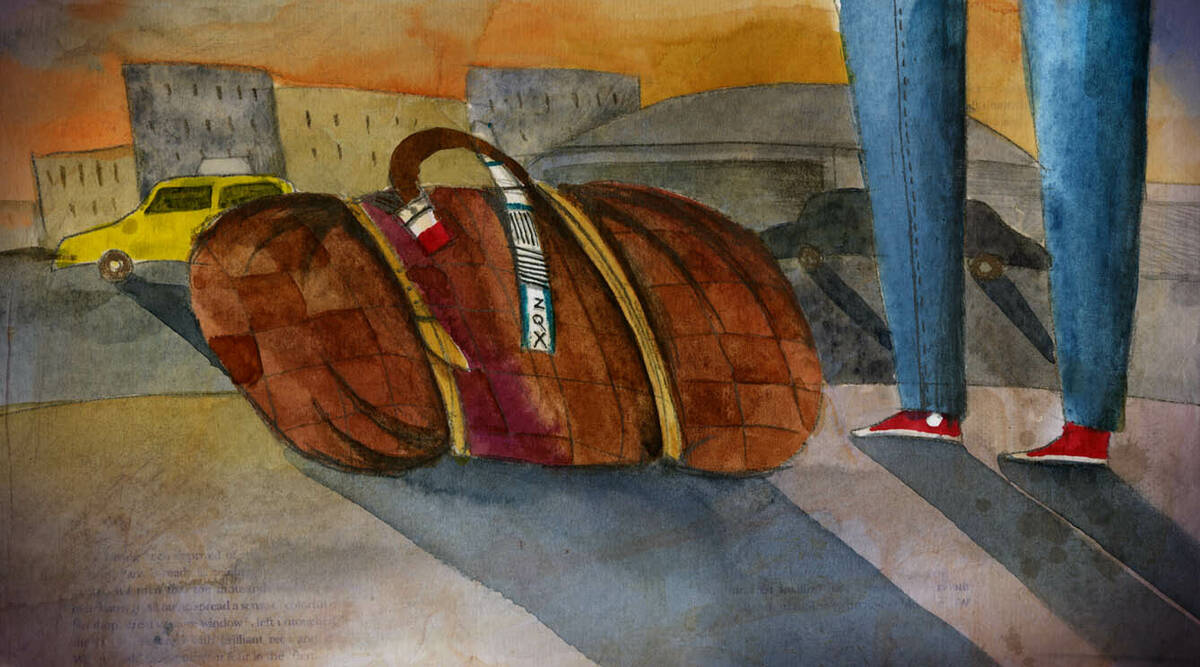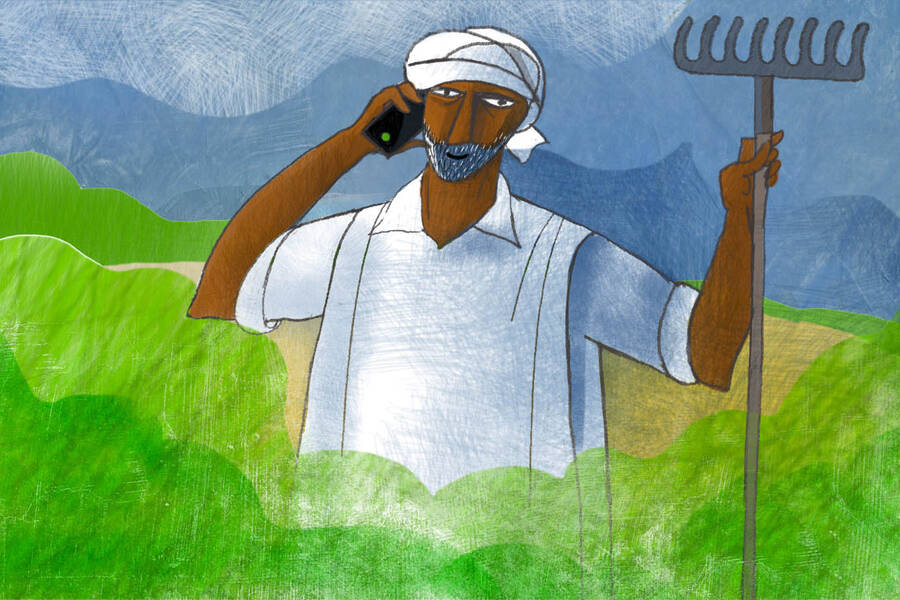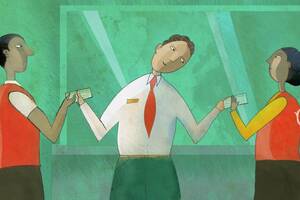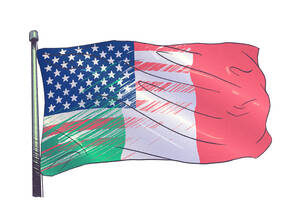
When extreme floods, wildfires, or droughts hit a region, it’s obvious that the labor market in that area will be affected. For instance, if unusually dry weather ruins crops in one part of a country, farm employees in that region could be forced to find new jobs.
But what happens to other parts of the country? Do extreme weather events cause a ripple effect from the disaster-struck area outward?
Jacopo Ponticelli, an associate professor of finance at Kellogg, and his colleagues reasoned that workers might migrate to other areas—and eventually, so might the flow of capital.
In a recent study, he and colleagues investigated this possibility in Brazil. The researchers confirmed that areas experiencing unusual dryness suffered sharp declines in farm productivity and employment. In the short term, loans were directed toward the affected area. But when dry conditions persisted for a decade, that financial stream dwindled, either because people were leaving or banks were lending less money.
“They’re learning that these areas are becoming riskier,” Ponticelli says.
Many people in those regions moved to other parts of the country, often to urban centers.
But those transitions didn’t always go smoothly for the workers. While some got new jobs in agriculture or the service industry, they struggled to break into the manufacturing sector, perhaps because they lacked social connections or skills.
“If we go toward drier and drier conditions in these areas, which is what all the climate models predict, we’re going to see even more of this reallocation [of labor].”
— Jacopo Ponticelli
Policymakers will need to help displaced workers find employment, since such migrations will likely only intensify in the future. “These climate shocks generate a lot of reallocation of labor,” Ponticelli says. “If we go toward drier and drier conditions in these areas, which is what all the climate models predict, we’re going to see even more of this reallocation.”
On the Move
Broadly speaking, policymakers have two strategies for dealing with climate change. One is to attempt to slow it down—for instance, by reducing emissions with carbon taxes or green technology.
The second is to help people adjust to the changes. For instance, if industries in certain areas are collapsing due to extreme weather, policymakers could design programs that help workers find new employment.
To figure out which policies are needed, “it’s important to document what happens to people and other resources such as capital when these shocks happen,” says Ponticelli, who collaborated with Christoph Albert at Collegio Carlo Alberto in Italy and Paula Bustos at the Centro de Estudios Monetarios y Financieros in Spain on the study.
One way workers might adjust to a changing climate is by moving away from areas afflicted by extreme weather. And indeed, a number of studies describe the large-scale migrations that are likely to occur between countries over the next century. But Ponticelli and his colleagues wanted to focus on shorter-term moves. When extreme events become more frequent, people’s first response will likely be to move to another region in the same country rather than go abroad, where they might have to learn a different language, adjust to a new culture, and start a social network from scratch.
“In the short run, a lot of the adjustment to climate change will be within-country,” he says.
Money Flows, Then Dries Up
So what does within-country climate migration look like?
Ponticelli’s team started by examining the direct effects of unusually dry conditions. They obtained data from Brazil’s National System of Civil Protection, which includes municipal reports of droughts, and uses the Standardized Precipitation Evapotranspiration Index, a measure proposed by climatologists to capture excessive dryness compared with historical averages.
The researchers found that from 2000 to 2010, dry conditions led to significant declines in agricultural productivity. For each reported drought, production value in the affected region dropped by 9.2 percent. From 2011 to 2018, things got even worse: the decrease in value associated with a drought was 13.5 percent.
The team then analyzed the flow of capital, using data from the Central Bank of Brazil on deposits, loans, and assets at all commercial-bank branches. They wanted to know what happened in the immediate aftermath of an extreme dry spell, as well as after several years of extreme dryness in a row.
In drought years, the net amount of capital entering the region increased. This suggests that, in the short term, people borrowed money to cope with the disaster. However, after experiencing a decade of unusual dryness, lending dropped. “You see the opposite,” Ponticelli says. The team doesn’t know if this pattern was caused by a decrease in supply or demand. Perhaps some farmers left the region and no longer requested loans. Or maybe banks were less likely to approve loans because they had decided these areas were riskier.
Fleeing to Cities
The team then turned their attention to other parts of the country. To figure out where migrants were most likely to move, they studied past migration patterns. They figured migrants were likely to follow the same path as earlier migrants because they’d have family or friends there who could provide a safety net and possible connections to jobs.
The researchers examined data from Brazil’s Population Census to determine past migration routes. Based on that information, they could assign each municipality a score capturing how connected it was, via these routes, to unusually dry places.
In places where excessive dryness had increased from the median to the 90th percentile, the population dropped by an average of 5.7 percent. As expected, regions that were connected to dry areas via past migration routes saw boosts in population. Typically, migrants seemed to move out of rural areas and toward urban centers.
From Farm to Factory
So how did the people fare, both those who stayed and those who moved away?
In the dry areas, employment in agriculture dropped—but so did employment in services, such as restaurants and retail. This indicates that extreme weather didn’t just push people to leave, but it also left the workers who stayed behind with less money to spend. In that scenario, “services is the classic sector that suffers,” Ponticelli says.
Meanwhile, employment in manufacturing in the dry areas increased. Among workers who lost jobs in agriculture and services, about one-quarter found new jobs in local factories. They typically worked in industries such as food processing, which didn’t require specialized skills. But the sector was also relatively small in rural areas, so it couldn’t absorb all the newly unemployed workers.
In destination areas, employment in agriculture and service increased, suggesting that some migrants managed to land jobs in these industries. But this did not happen with manufacturing jobs. Why not, the team wondered. Could it be a lack of social connections at these firms?
To find out, the researchers studied social-security records of each firm’s employees in the destination regions. This allowed them to see how many workers originally came from the unusually dry areas. The higher that fraction, the more connected that firm was to the drought-stricken regions.
In agriculture, 6 percent of the firms’ employees had moved there from dry areas; in service, that figure was 4 percent. But manufacturing was the lowest, at 2 percent.
The results suggest that manufacturing companies don’t usually hire workers from those regions, Ponticelli says. Instead, they might be more likely to hire people graduating from schools in the city. In addition to lacking social connections, the migrant workers might not have the right skills to work at urban manufacturing plants, which tend to produce more complex products such as cars, machineries, and equipment.
Smoothing the Transition
The results have important implications for public policy. Since migrants seem to be encountering obstacles in the manufacturing industry, there is an opportunity for policymakers to step in to help them land jobs. This could mean developing new programs to train workers or building agencies or apps to help match migrants to companies.
But what will happen in the long run if people keep moving to cities? Will urban areas overflow and become unable to absorb more workers?
Answering that question will require more research, accounting for factors such as job growth in cities and whether migrants will choose to have fewer kids after moving. Previous studies suggest that higher population density in cities can spark innovation and boost productivity, “but it is a question whether this is sustainable or not,” Ponticelli says.
And the direction of migration might look different in other countries. In the United States, major climate-change risks include flooding and wildfires in coastal areas. While extreme weather in Brazil is pushing people from the interior to the edges of the country, “in the U.S., if anything, we might see the opposite, from coastal areas to the interior,” he says.
Roberta Kwok is a freelance science writer in Kirkland, Washington.
Christoph Albert, Paula Bustos, and Jacopo Ponticelli. “The Effects of Climate Change on Labor and Capital Reallocation.” Working paper doi: 10.3386/w28995.



